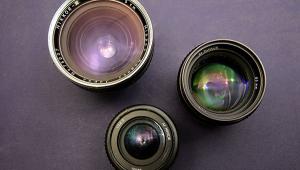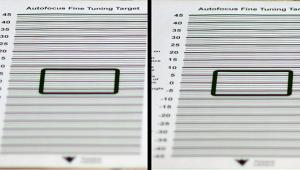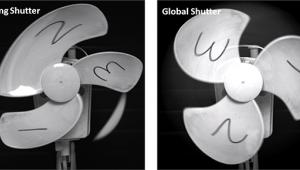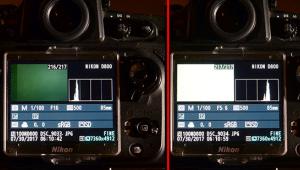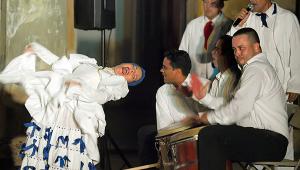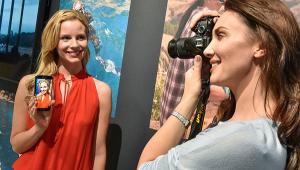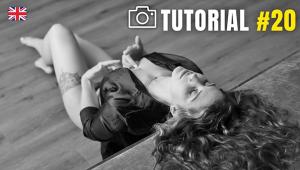Freeze Framing: How Technological Breakthroughs Help Us Get Sharp Shots of Movement

© Josh Miller Photography
We call it still photography, but very little about it is still.
In real-world shoots, both camera and subject are often moving. Six generations of photographers have fought this problem in their quest for images as sharp as a zoot suit. And nowhere is this fact of photographic life more obvious than when you’re trying to freeze the movement of wildlife. Whether you’re bagging African megafauna or trying to capture backyard beetles, stopping the motion is part of the assignment. So how do you do it?
Today, most cameras are used hand-held, which is obviously convenient. But unless you’re dead, a handheld camera will shake, introducing unwanted blur. To avoid this, many photographers use a familiar rule of thumb. Namely, they choose a shutter speed at least as fast as the reciprocal of the lens focal length. In other words, with a 50mm lens, they opt for a shutter speed of 1/50th of a second or faster, and with that 300mm artillery piece, 1/300th second.
Yes, it’s a rule of thumb, although it should be called a rule of hand since it assumes you’re pretty average at holding a camera steady. With practice, you might do better than average. But don’t fool yourself: I find that my handheld shots are truly sharp only when I dial in shutter speeds that are a factor of two faster than the rule of thumb. But that’s me, and individual results will vary.
Needless to note, you can always schlep along a tripod on your next shooting safari, or pack an expensive vibration reduction lens. Either will ameliorate the shaking at the taking end. But what about the fact that your subject is alive and kicking?
There’s history here, although methods for dealing with the problem were originally few, and mostly applicable to portraits. A common studio accessory was a head brace, which looked like a floor lamp topped by an arm with a U-shaped fitting. This metal contraption, placed behind the subject, helped 19th century photogs stop bobbing heads from blurring their photos.
Then came flash powder. In 1887, two German scientists invented the first practical flash—pulverized magnesium mixed with potassium chlorate. The light output was high, and the exposure time was, for that era, short—maybe a tenth of a second. Although not a favorite with wildlife photographers, it became obligatory kit for anyone making night shots or indoor portraits. Unfortunately, it also occasionally set fire to buildings, a clear disincentive for those hoping for repeat business.
In the 1920s, powders in the pan became old school. Flash bulbs—another German invention—became the technology of choice, and one that endured for half a century. These typically had flash durations between 1/100th and 1/50th of a second, adequate for eliminating blur in many situations, if not all.
But then Harold Edgerton, an MIT electrical engineer, pioneered today’s defining equipment for action photographers. He filled glass tubes with xenon gas, and set them aglow with a high voltage discharge from a large capacitor. The light was bright and spectrally similar to sunlight. It was also short, often as brief as one-millionth of a second. Today, his photos of spattering milk and bullets ripping through apples are iconic.
Nonetheless, it was decades before Edgerton’s invention was small enough and cheap enough to make its way into studio lighting, camera-mounted speedlights, and even disposable cameras. Today, electronic flash remains the go-to technology if you want the ultimate tool for freezing moving subjects.
So how fast is it? Just about any electronic flash will be adequate for fashion photography. But high-speed birds or bugs are more challenging.
Contrary to your intuition, the briefest flashes are not produced by those imposing studio heads, but by smaller, camera-mounted strobes. This is because they differ in their mode of operation. Studio equipment follows Edgerton’s original design: a big capacitor is charged up, and when you trip the flash it fully discharges through the xenon tube. This takes time: typically 1/300th to 1/1000th second (note that, because of the way flash duration is measured, you should lengthen the manufacturer’s quoted flash times by a factor of three). And if you dial down the power, the flash length actually gets longer.
However, camera speedlights don’t dump all their charge to the tube unless you have them set to full power. Otherwise, circuitry quenches the flash when the dialed-in light intensity is reached. This is like either pouring out the entire contents of a glass versus stopping when you’ve poured just enough. So if you reduce the power of your speedlight, say to 1/16th or less, the flash will be shorter—you can easily reach 1/10,000th of a second.
Who would’ve thunk? That simple camera-mounted speedlight is the action stopper that your granddaddy never had.

Seth Shostak is an astronomer at the SETI Institute who thinks photography is one of humanity’s greatest inventions. His photos have been used in countless magazines and newspapers, and he occasionally tries to impress folks by noting that he built his first darkroom at age 11. You can find him on both Facebook and Twitter.
(Editor’s Note: Technically Speaking is a new column by astronomer Seth Shostak that explores and explains the science of photography.)
- Log in or register to post comments

